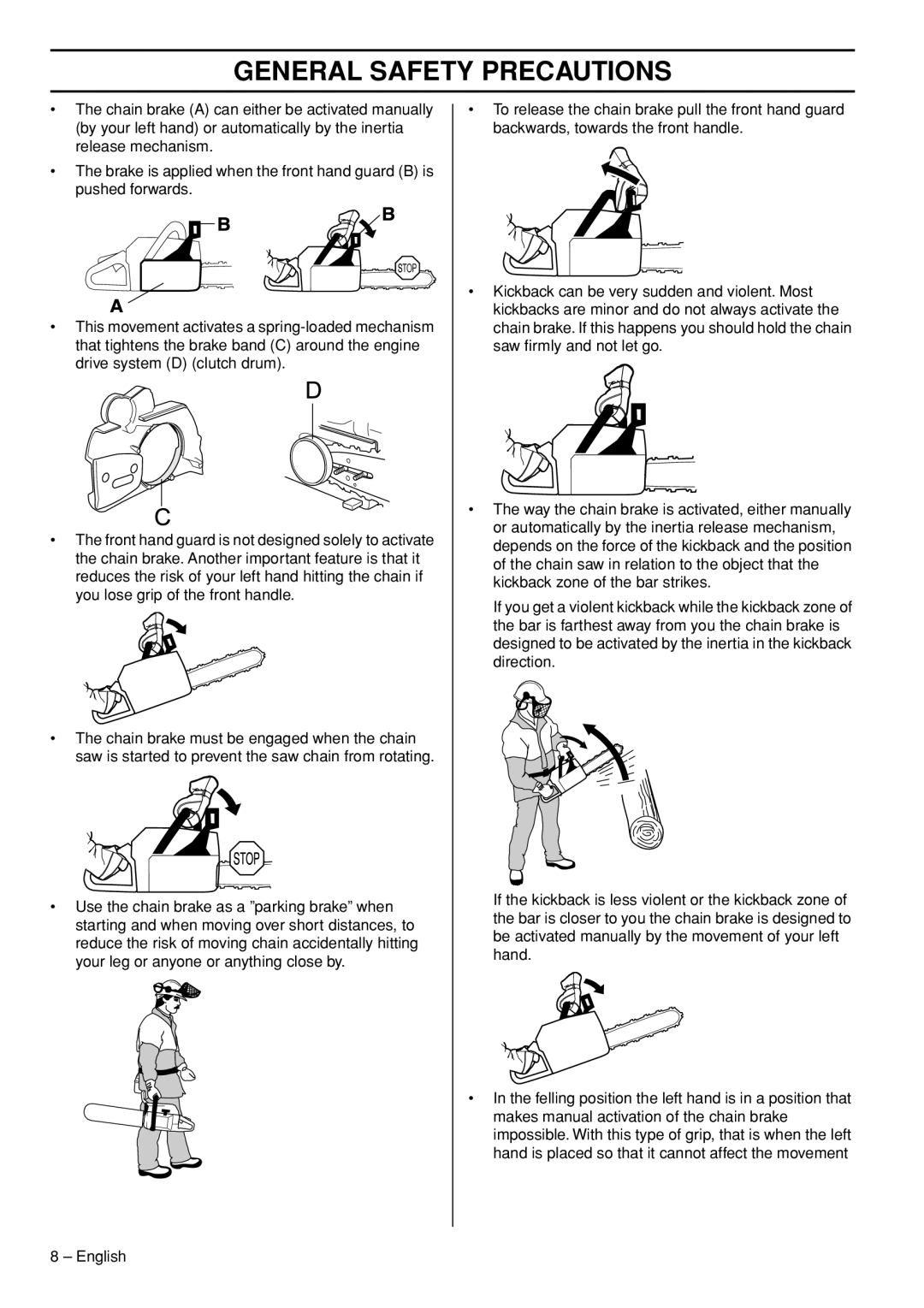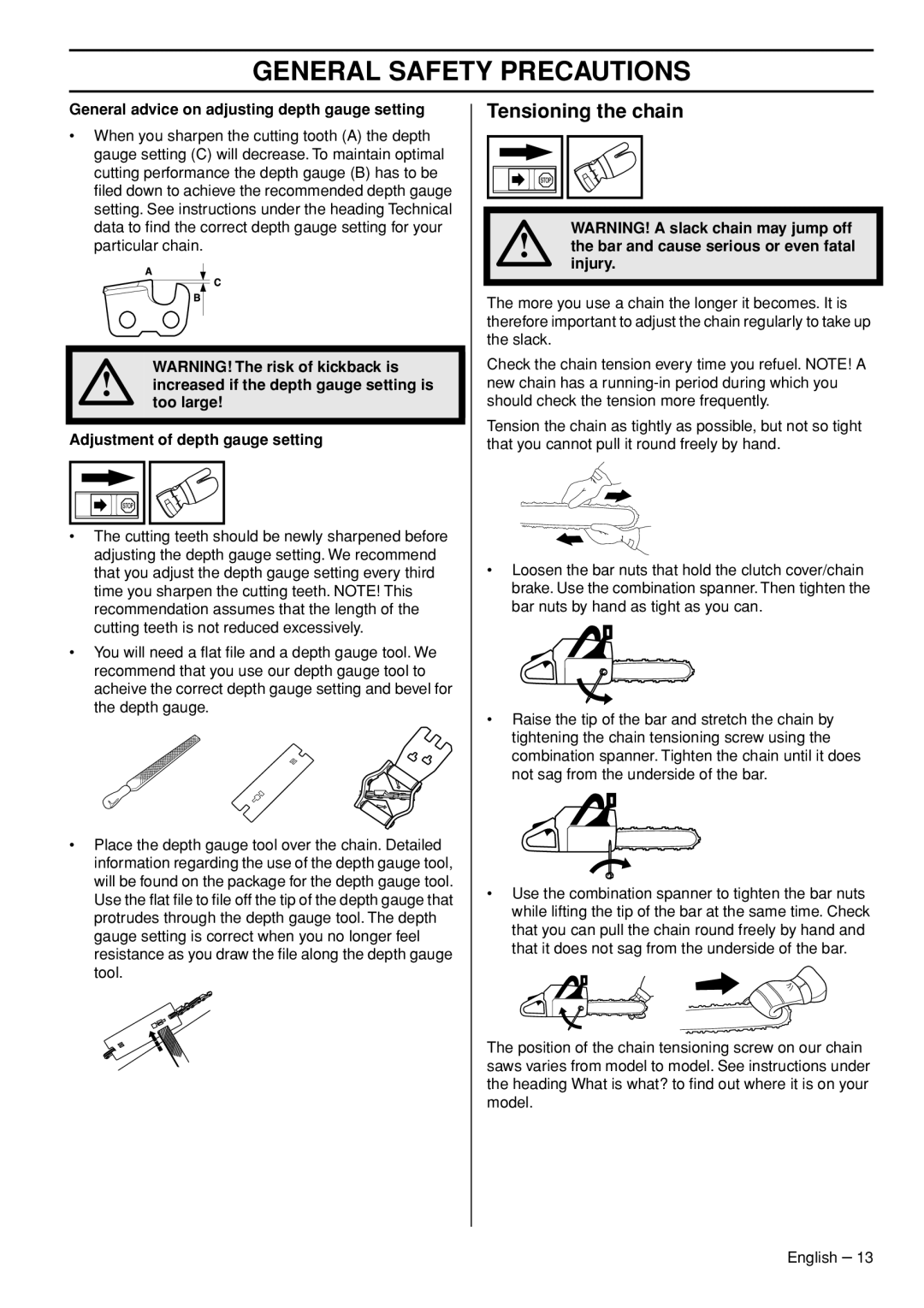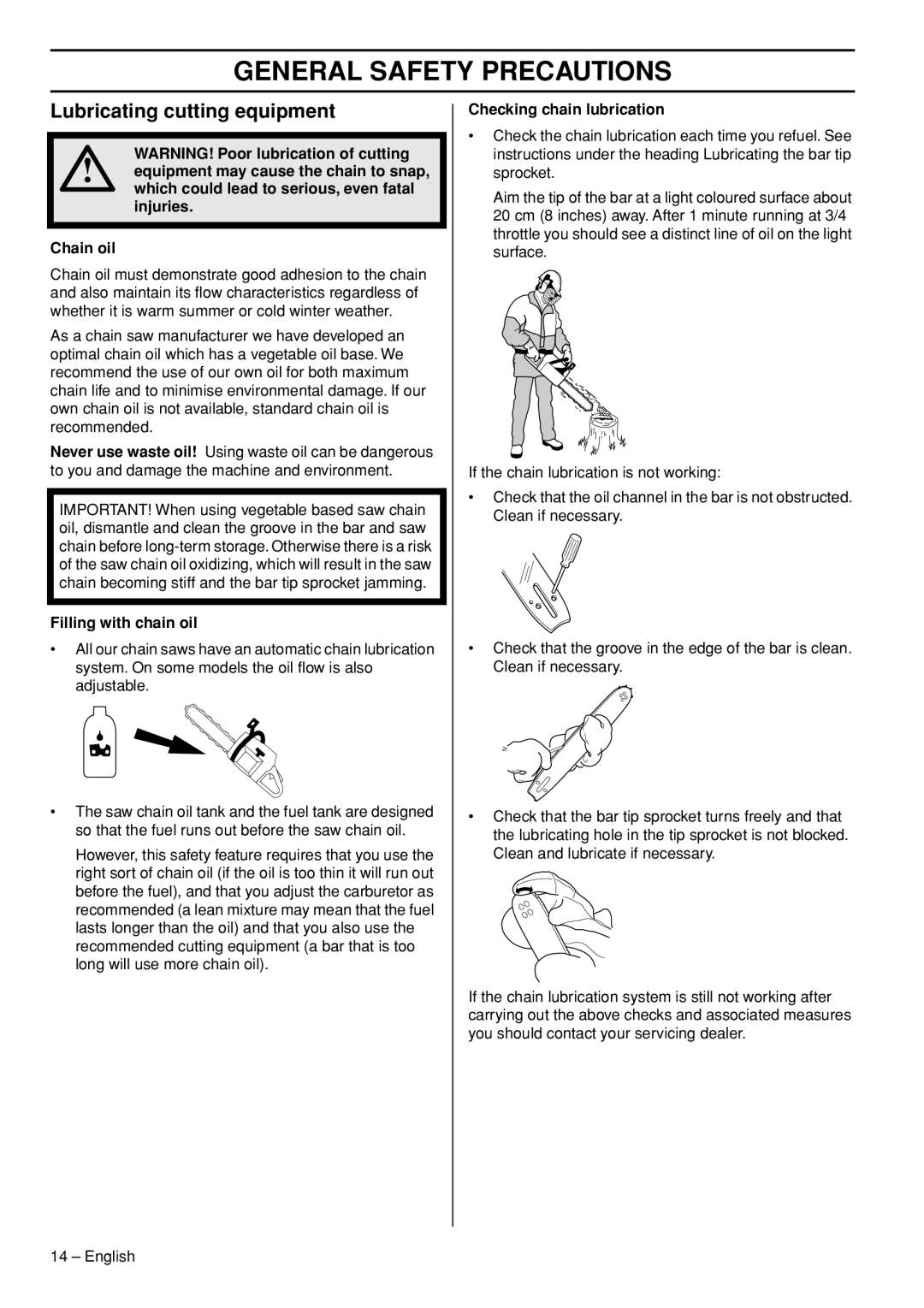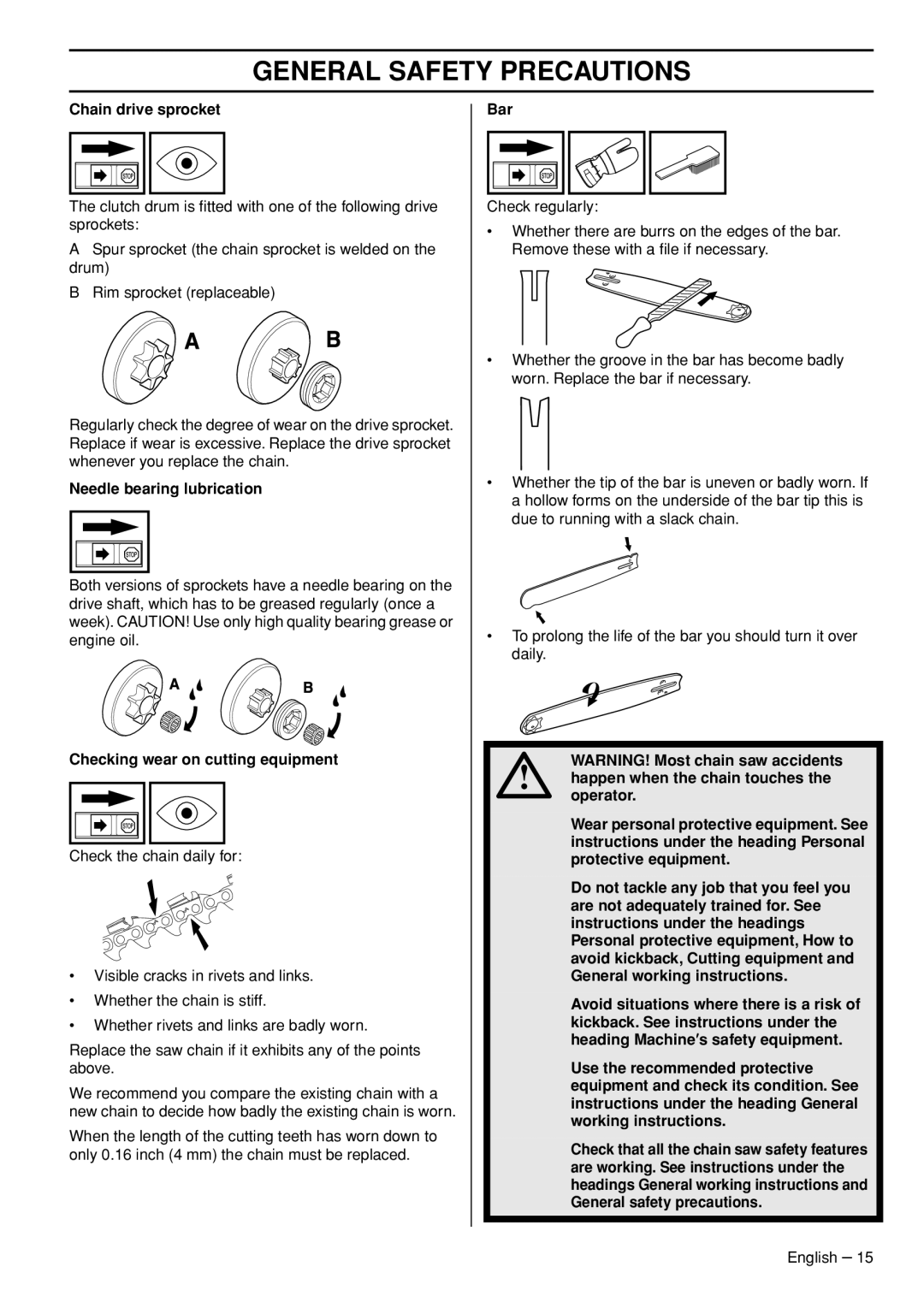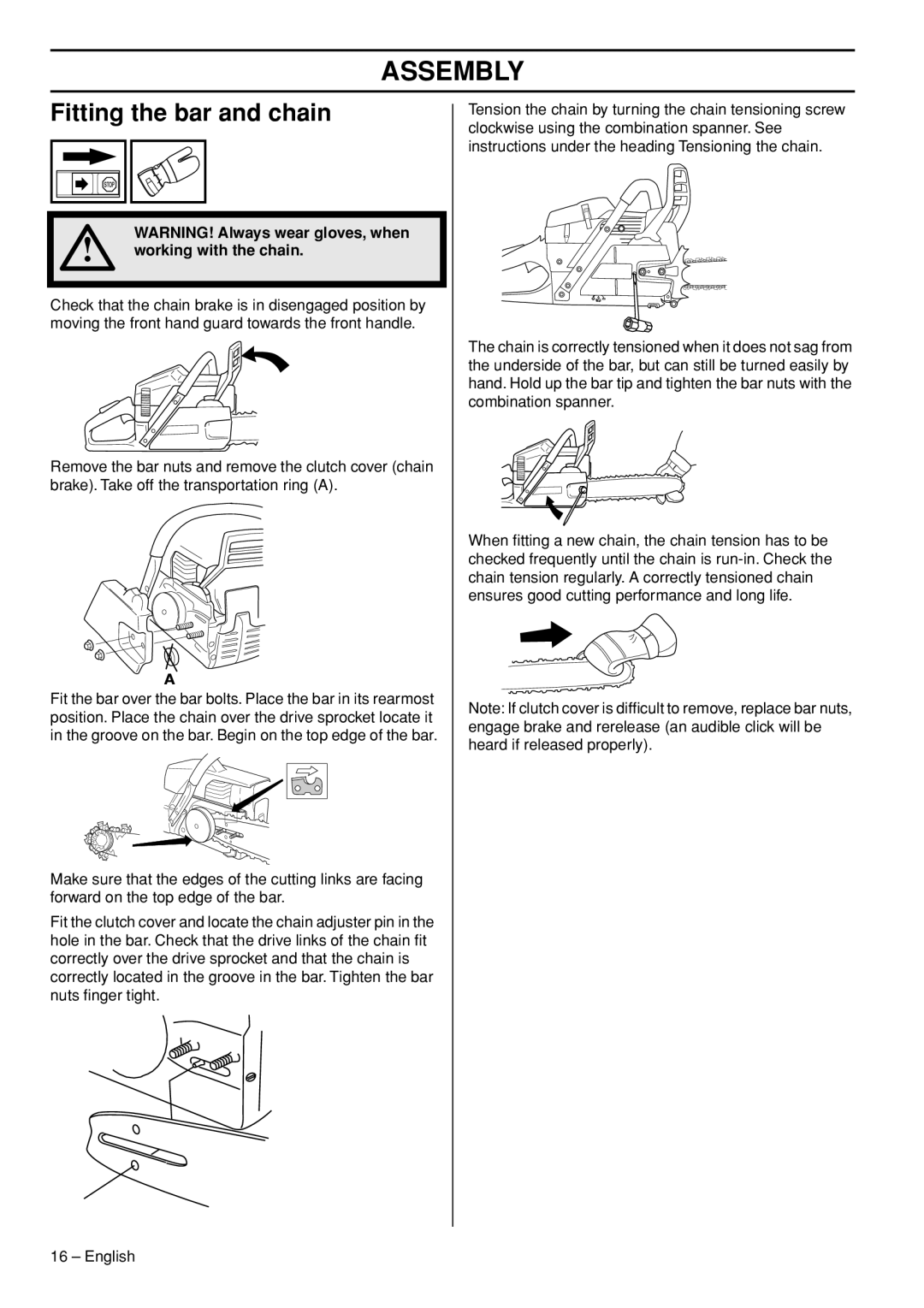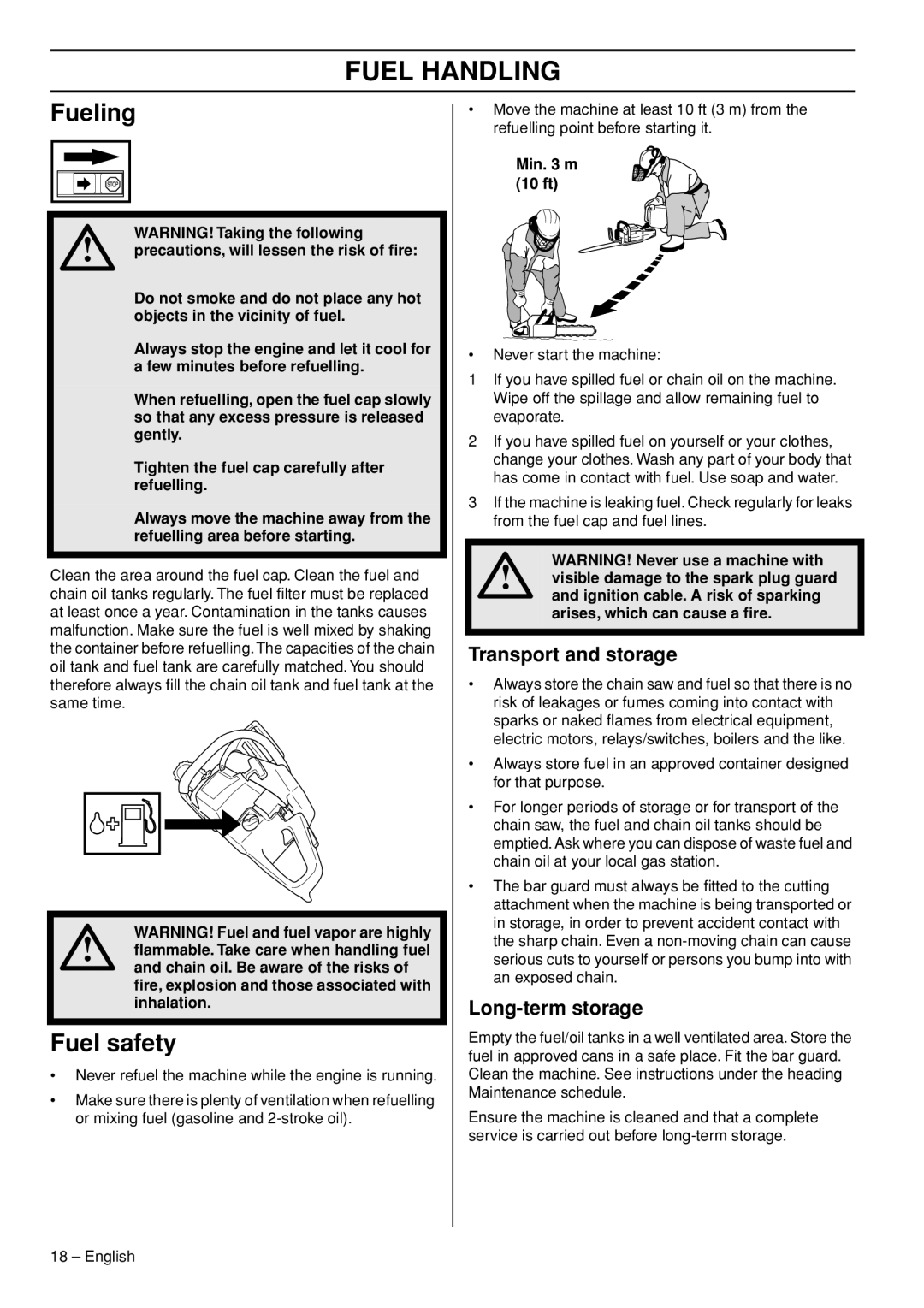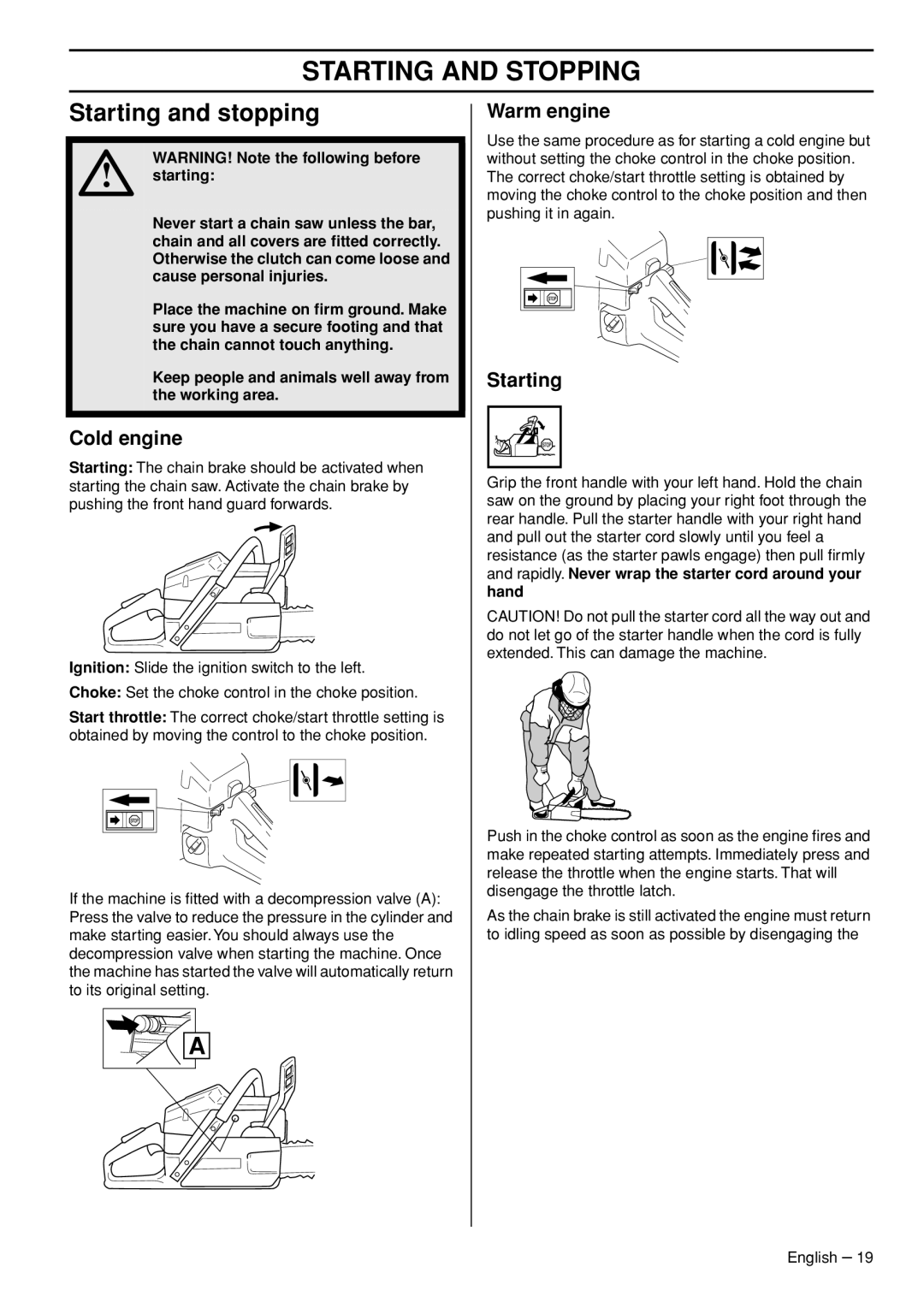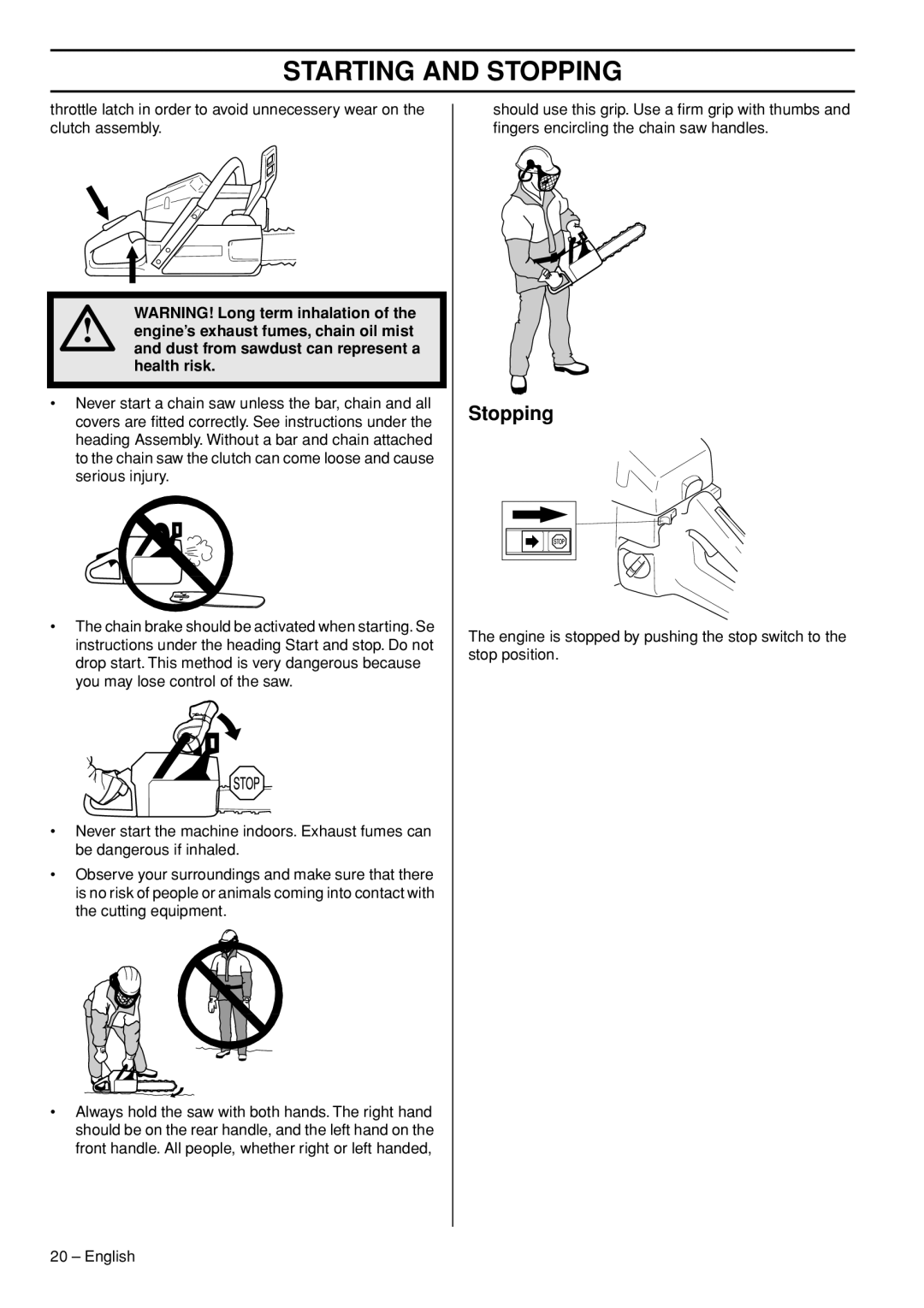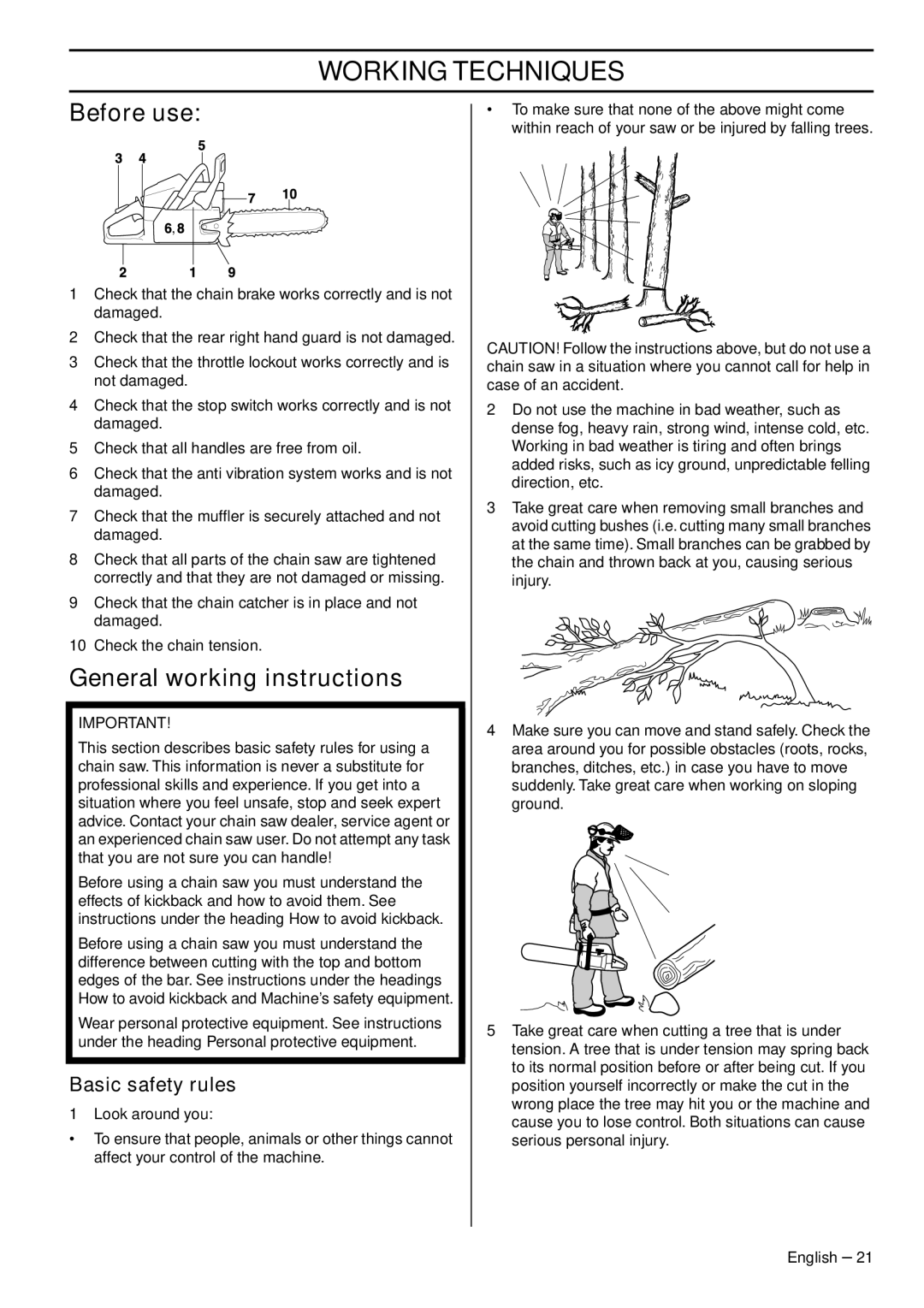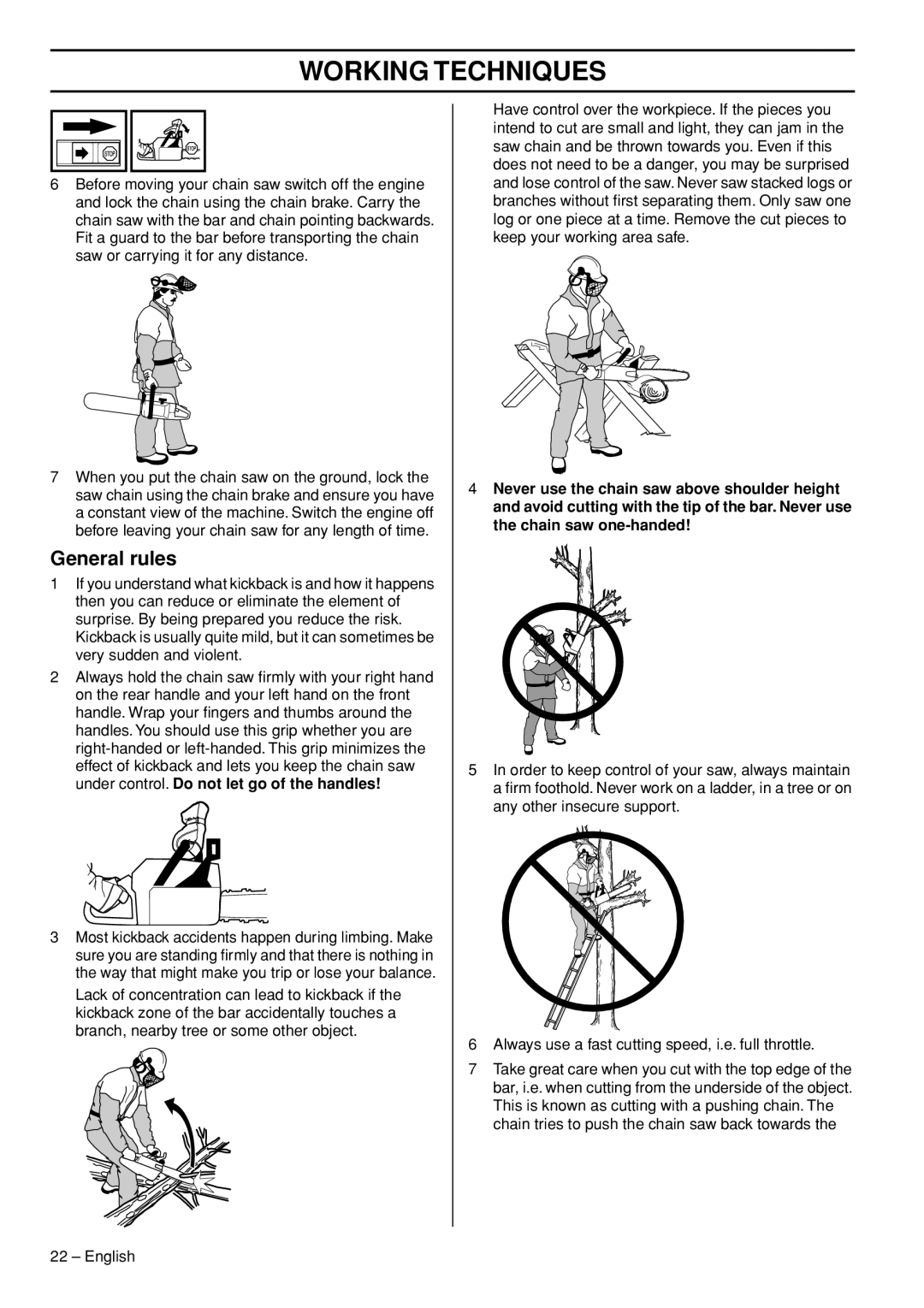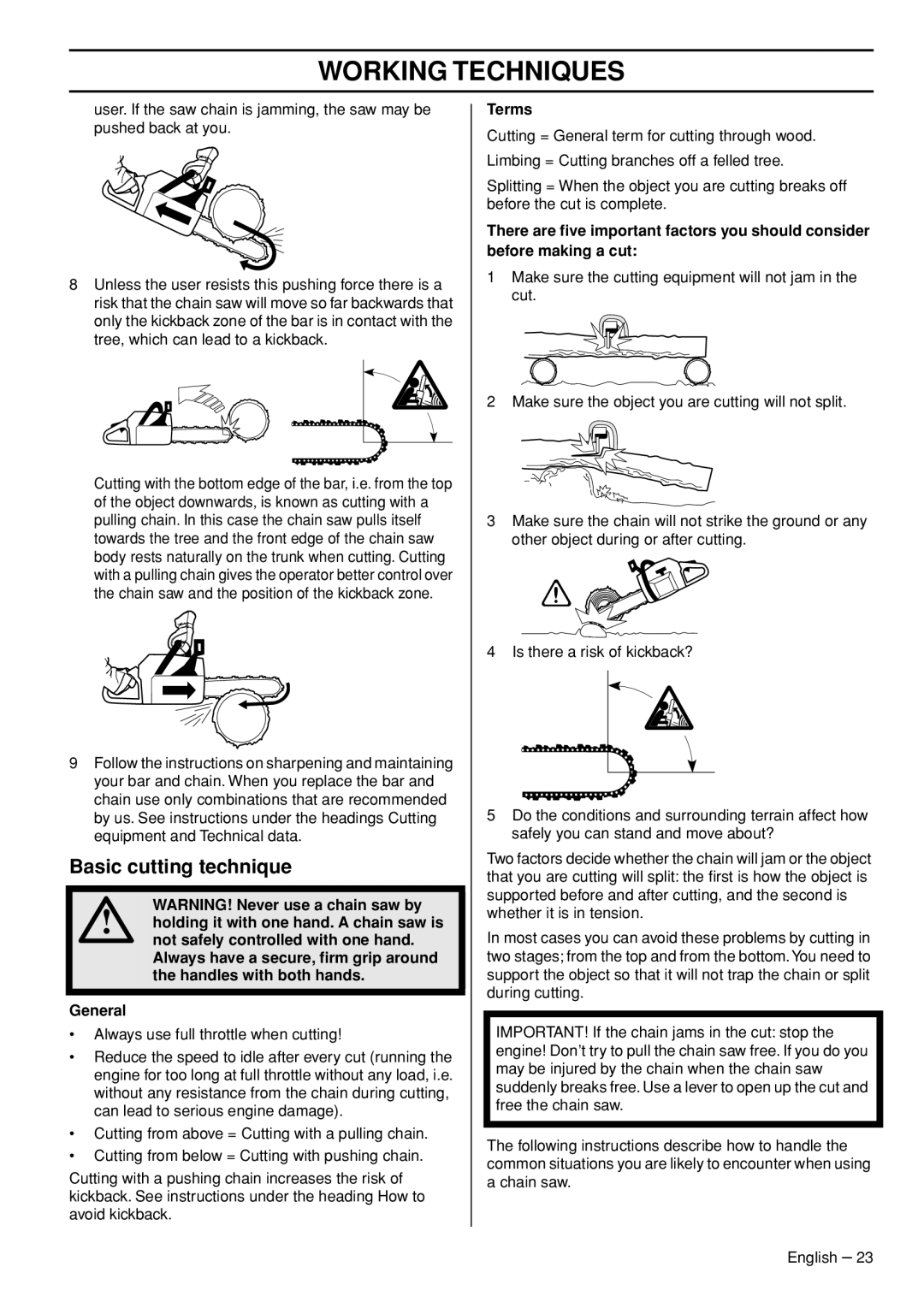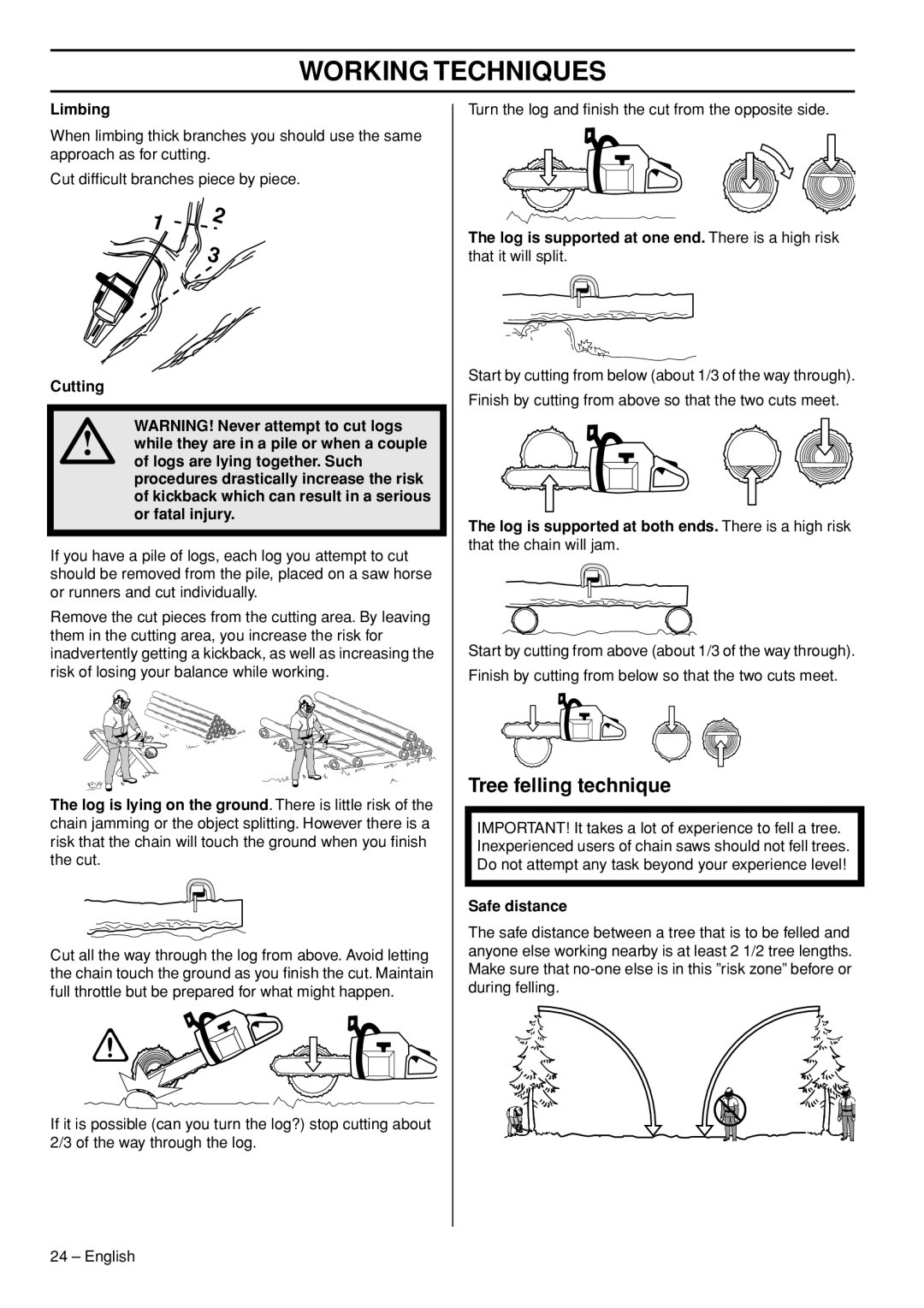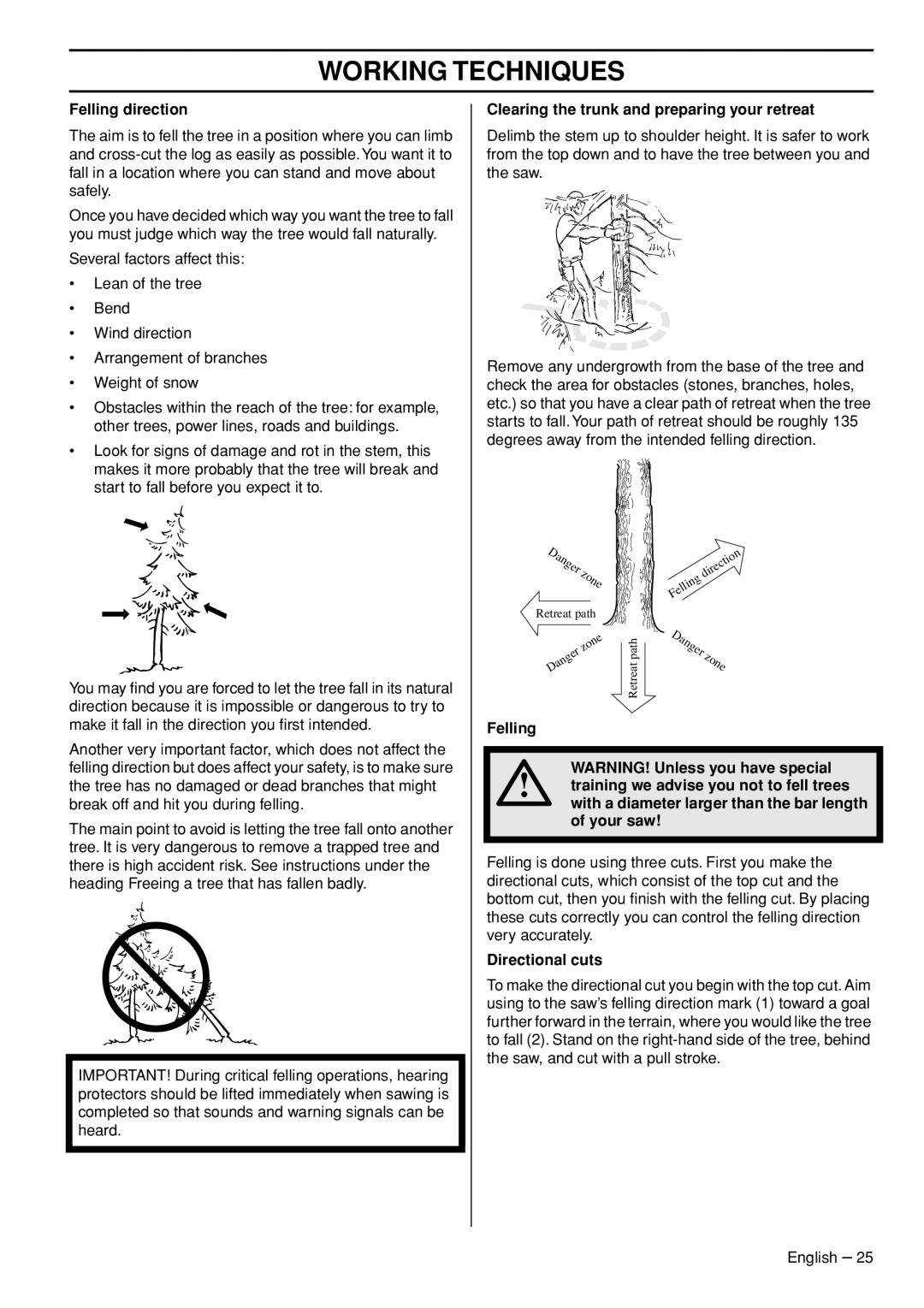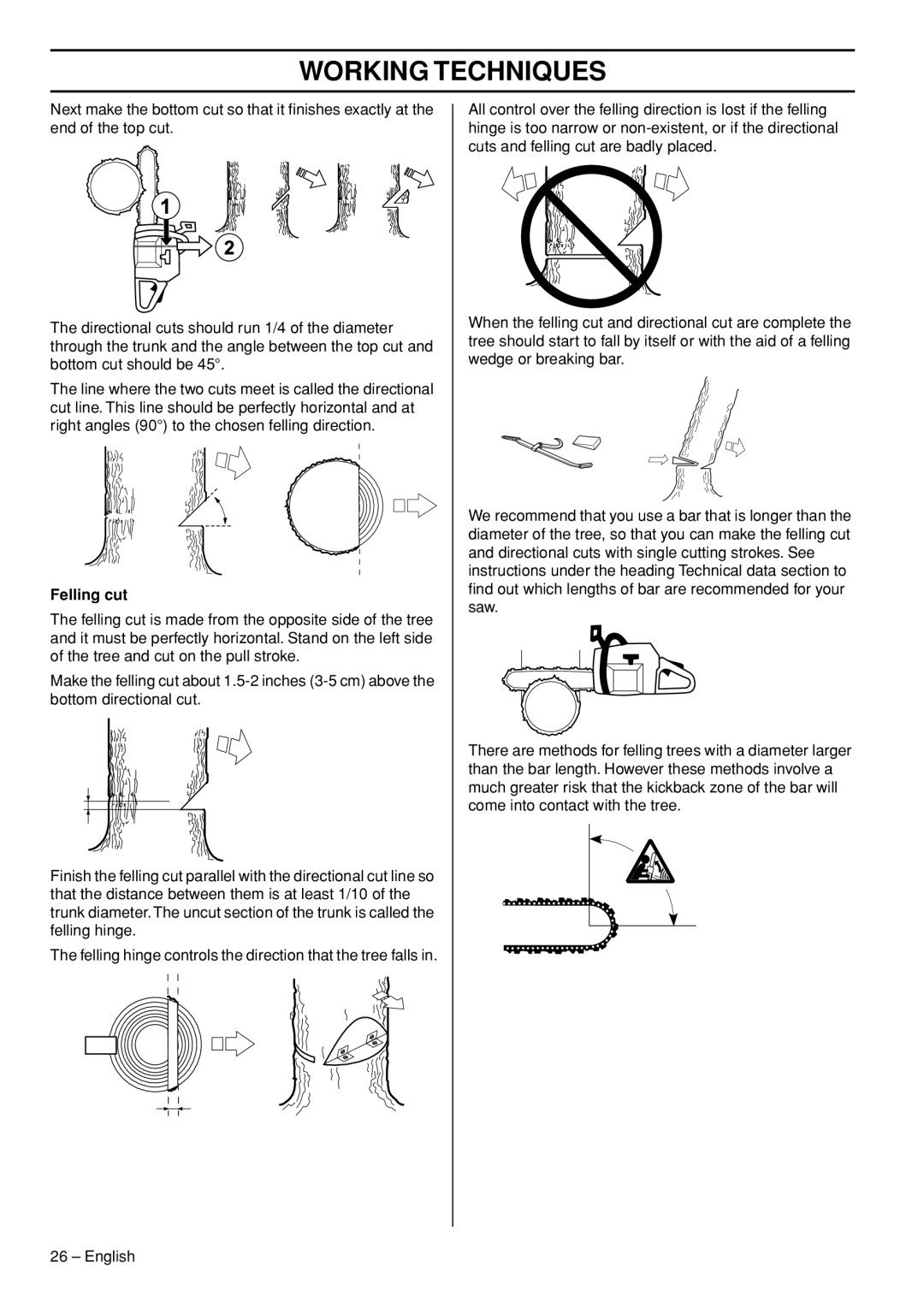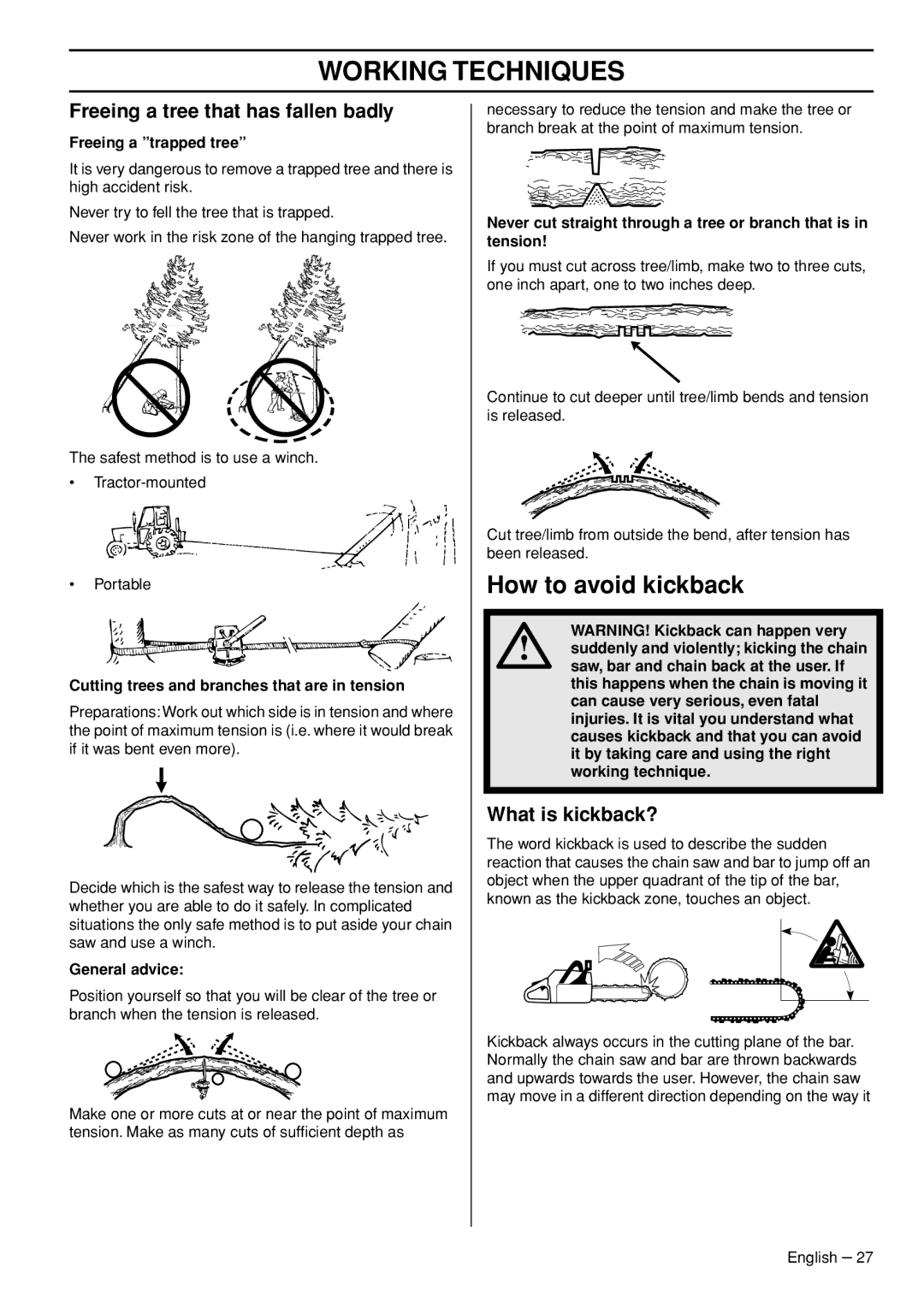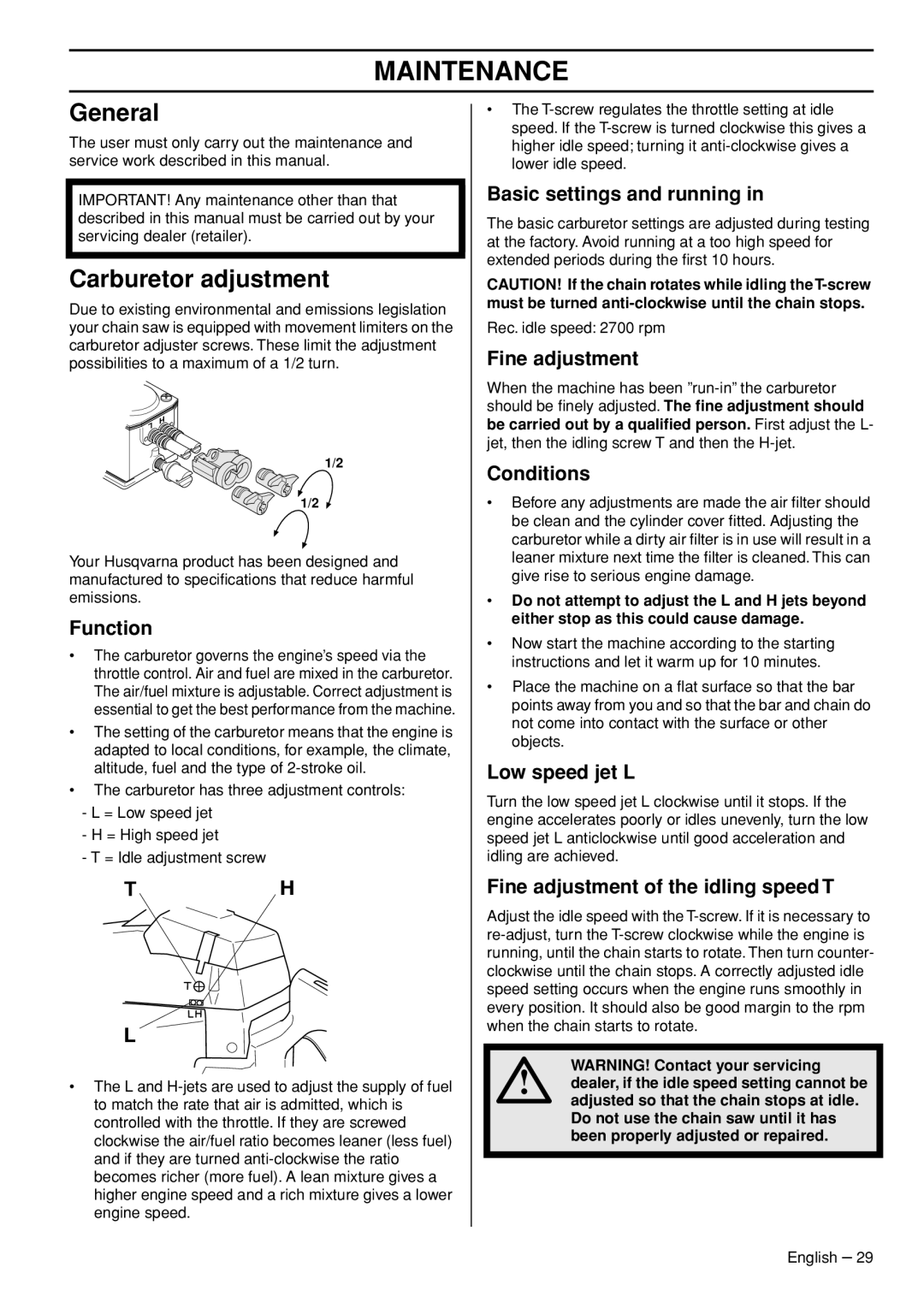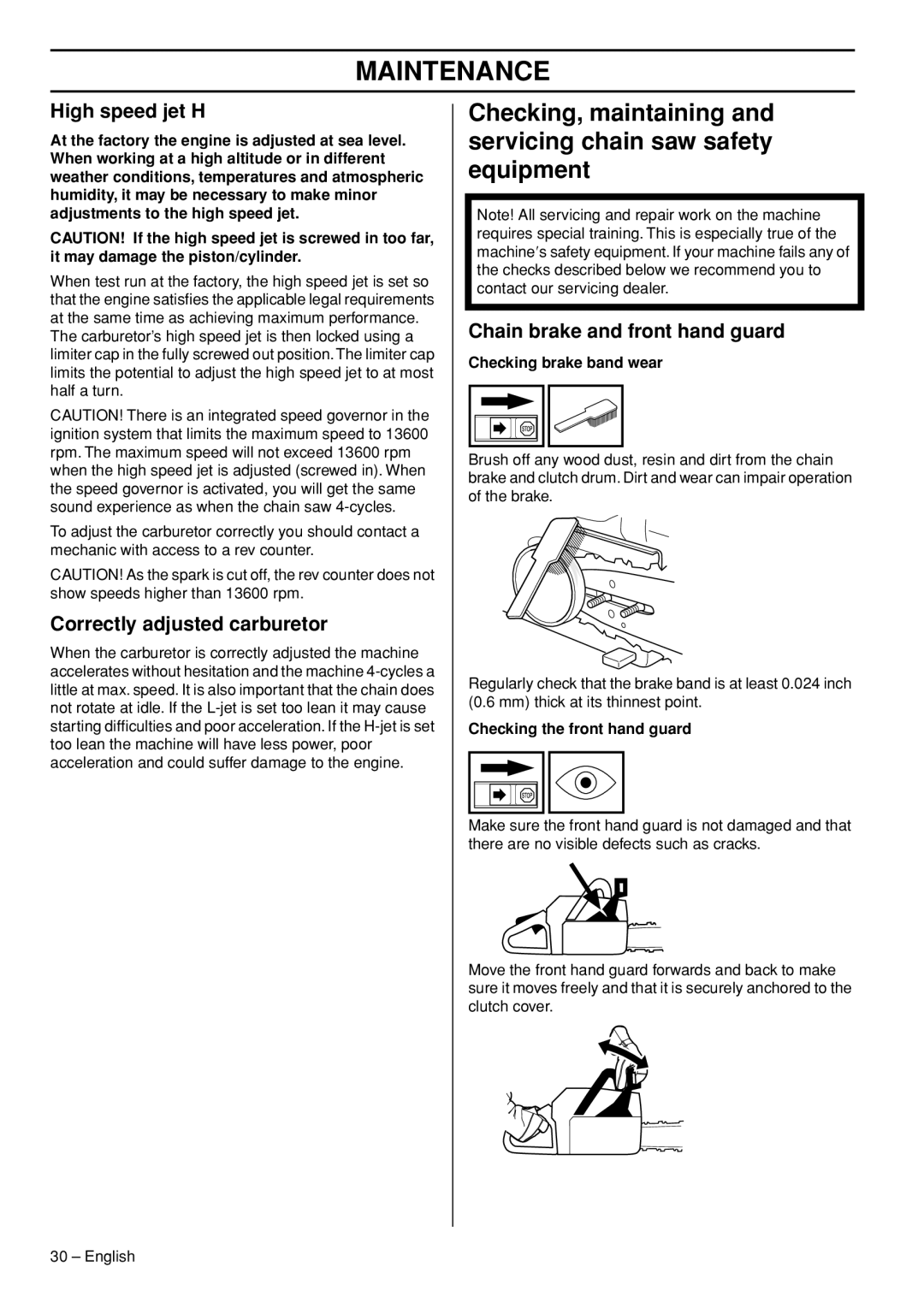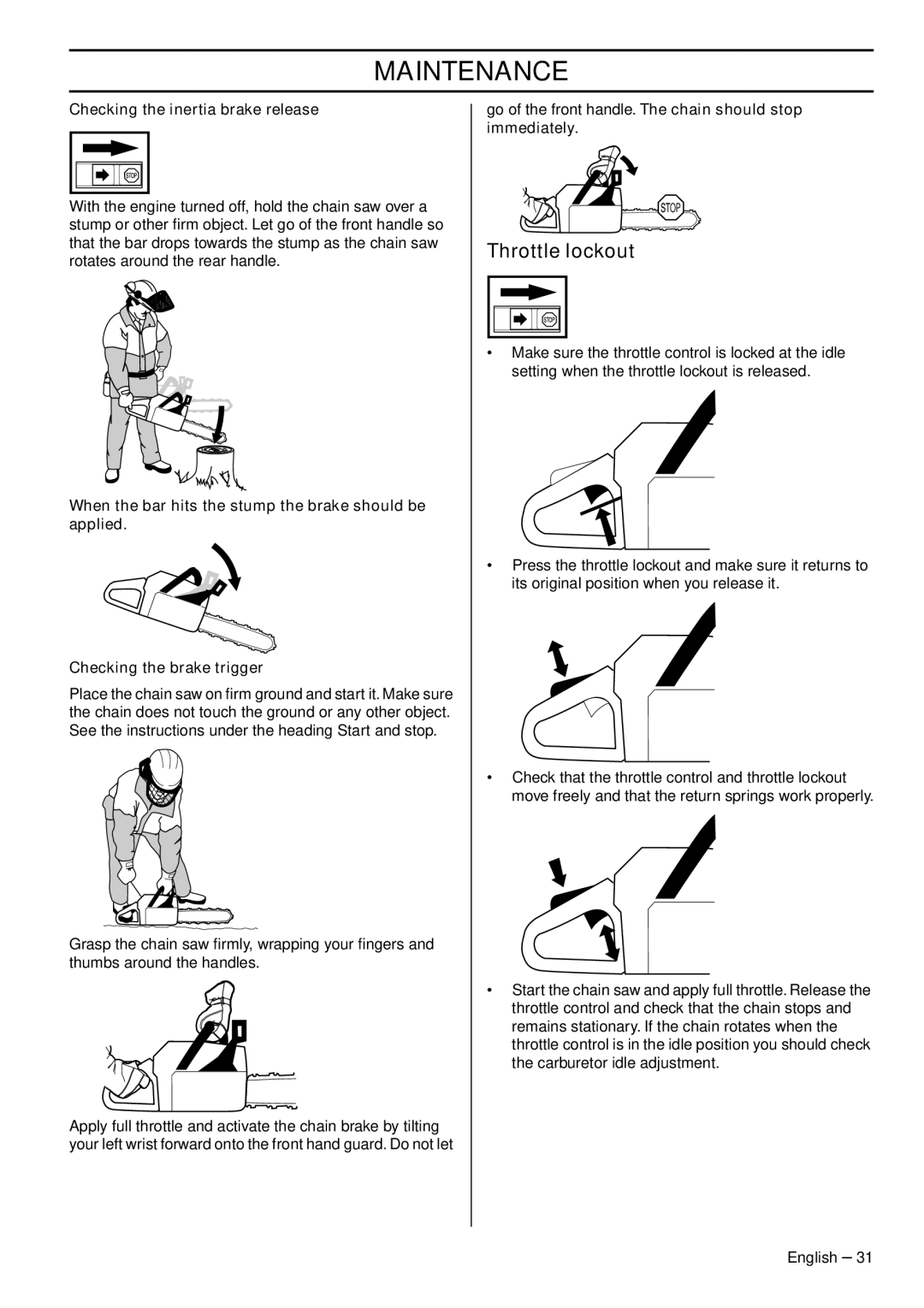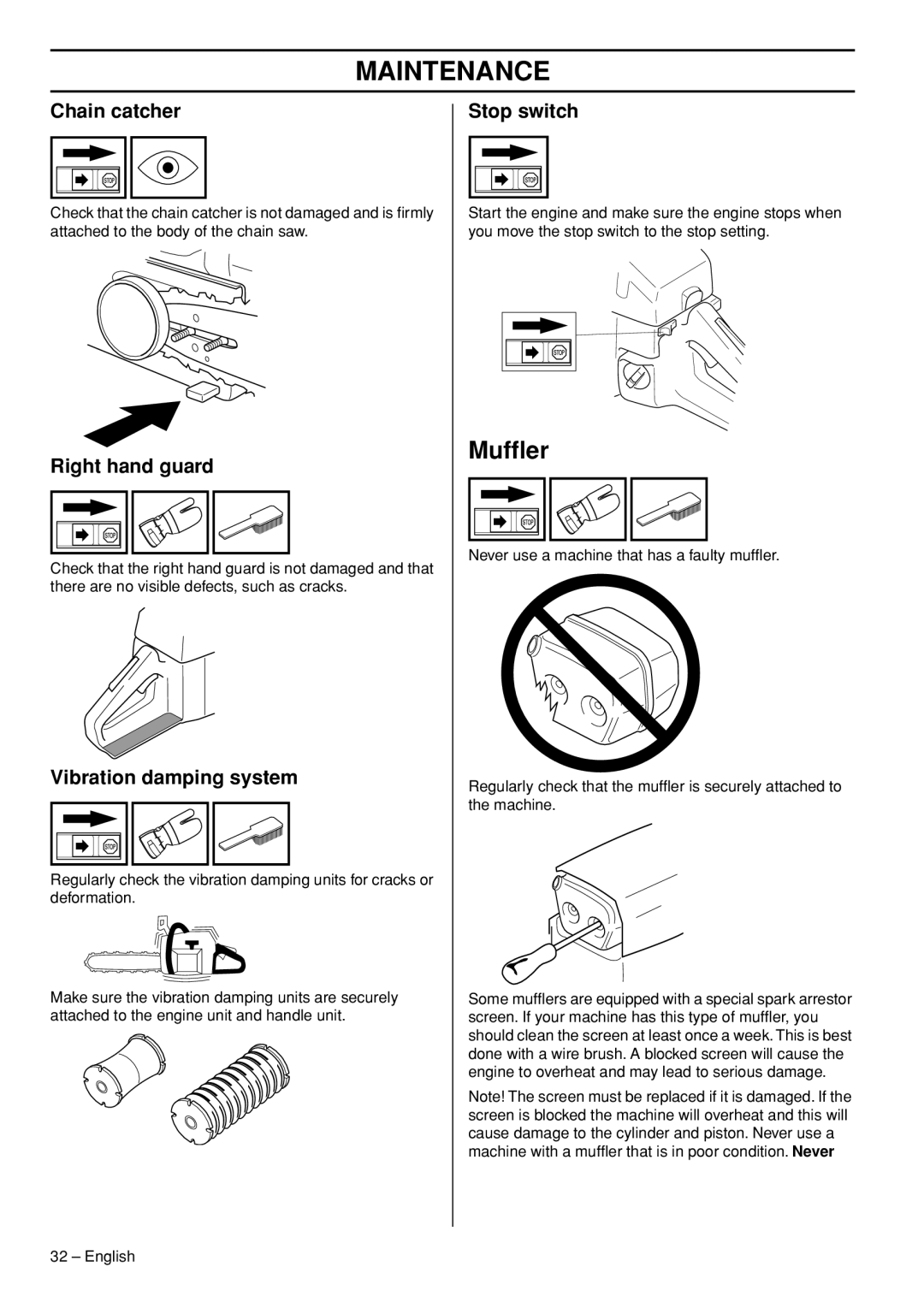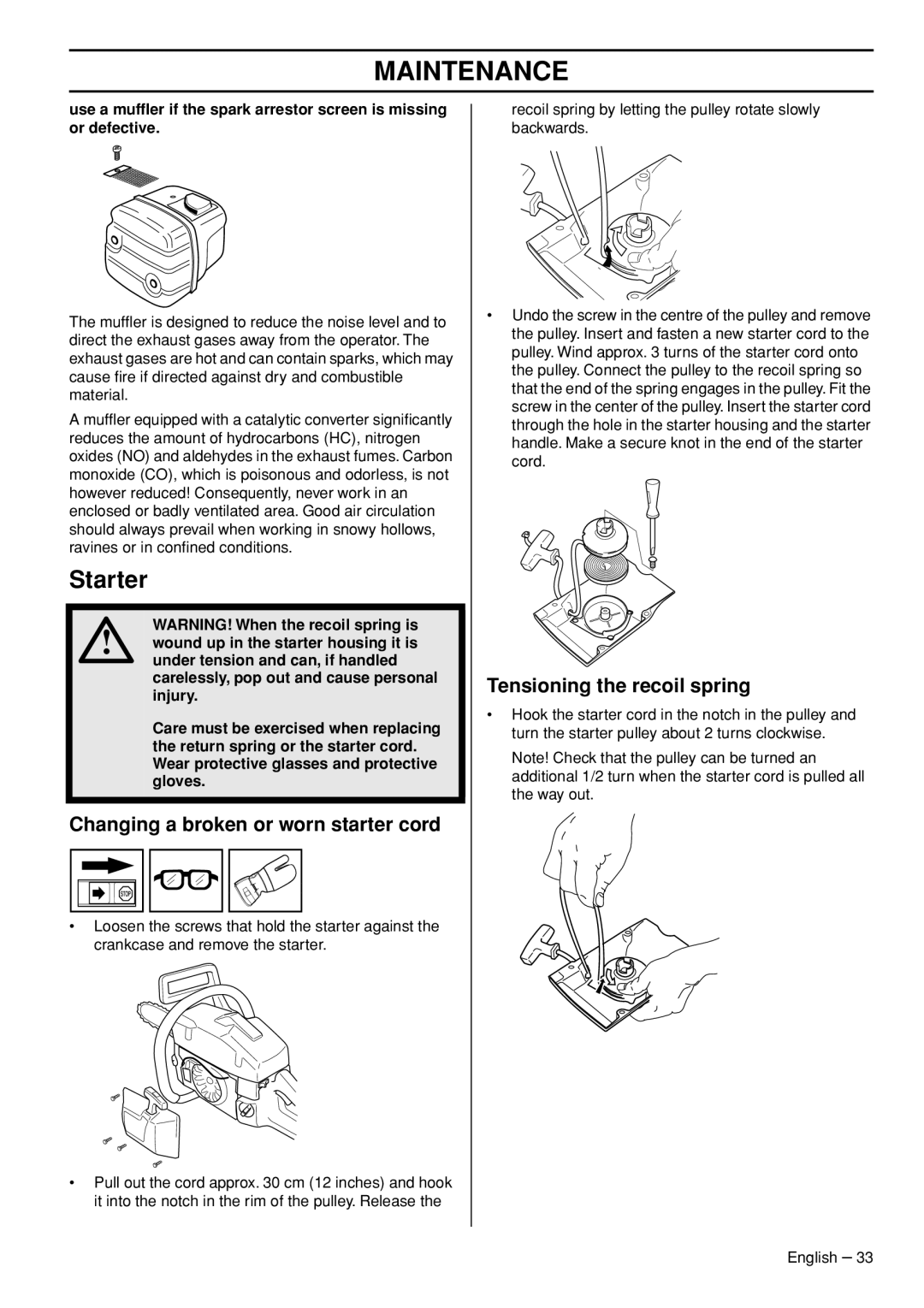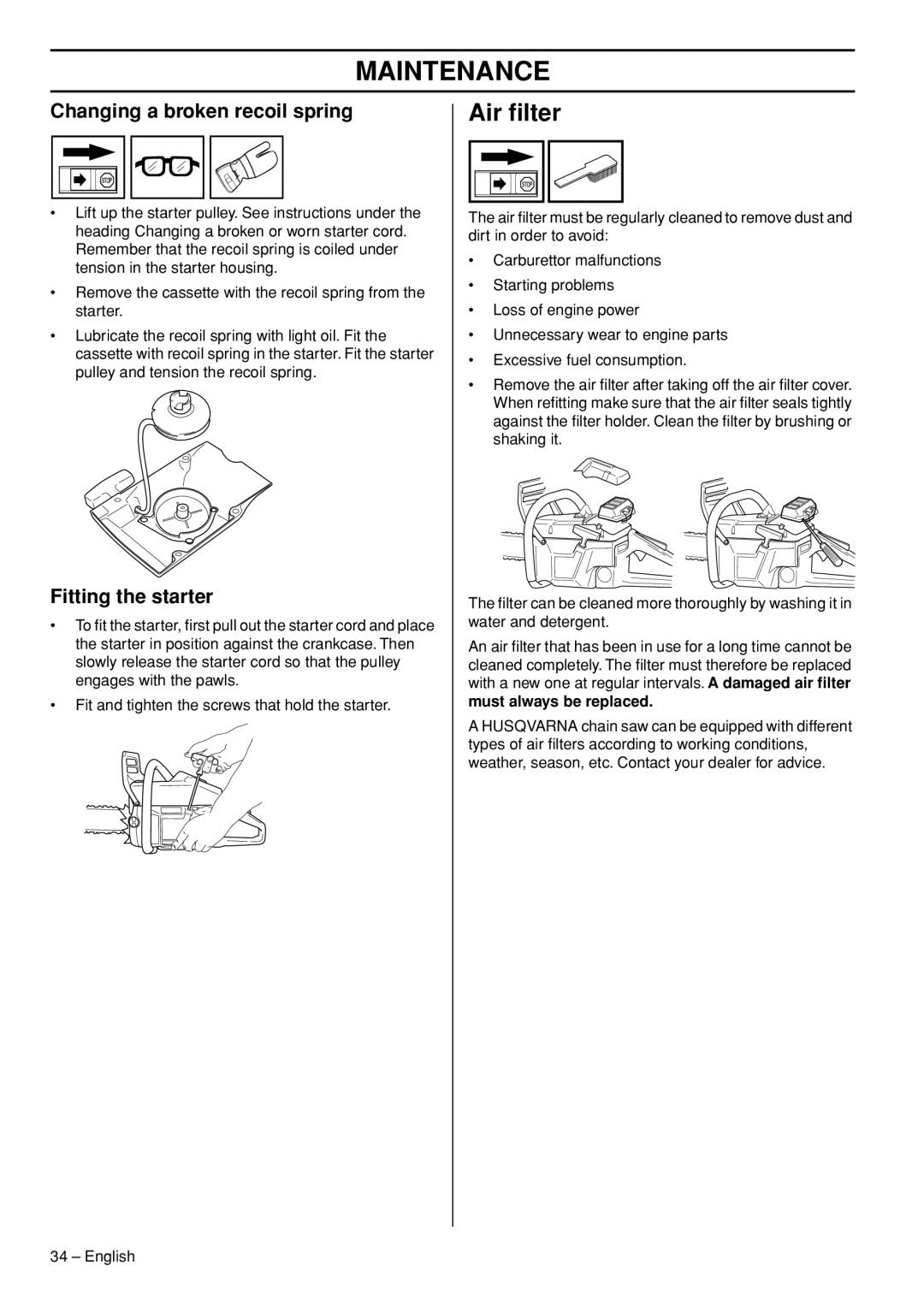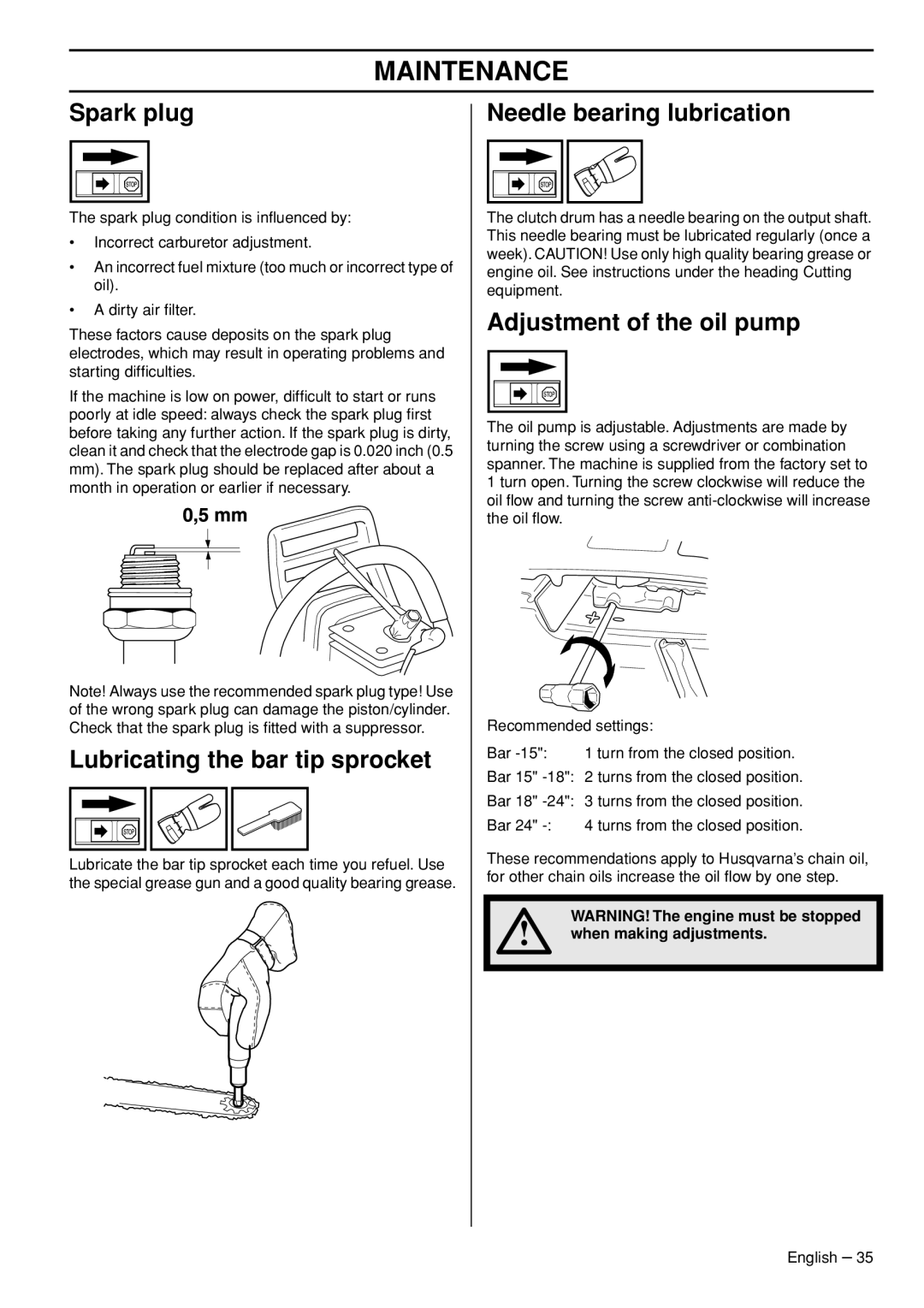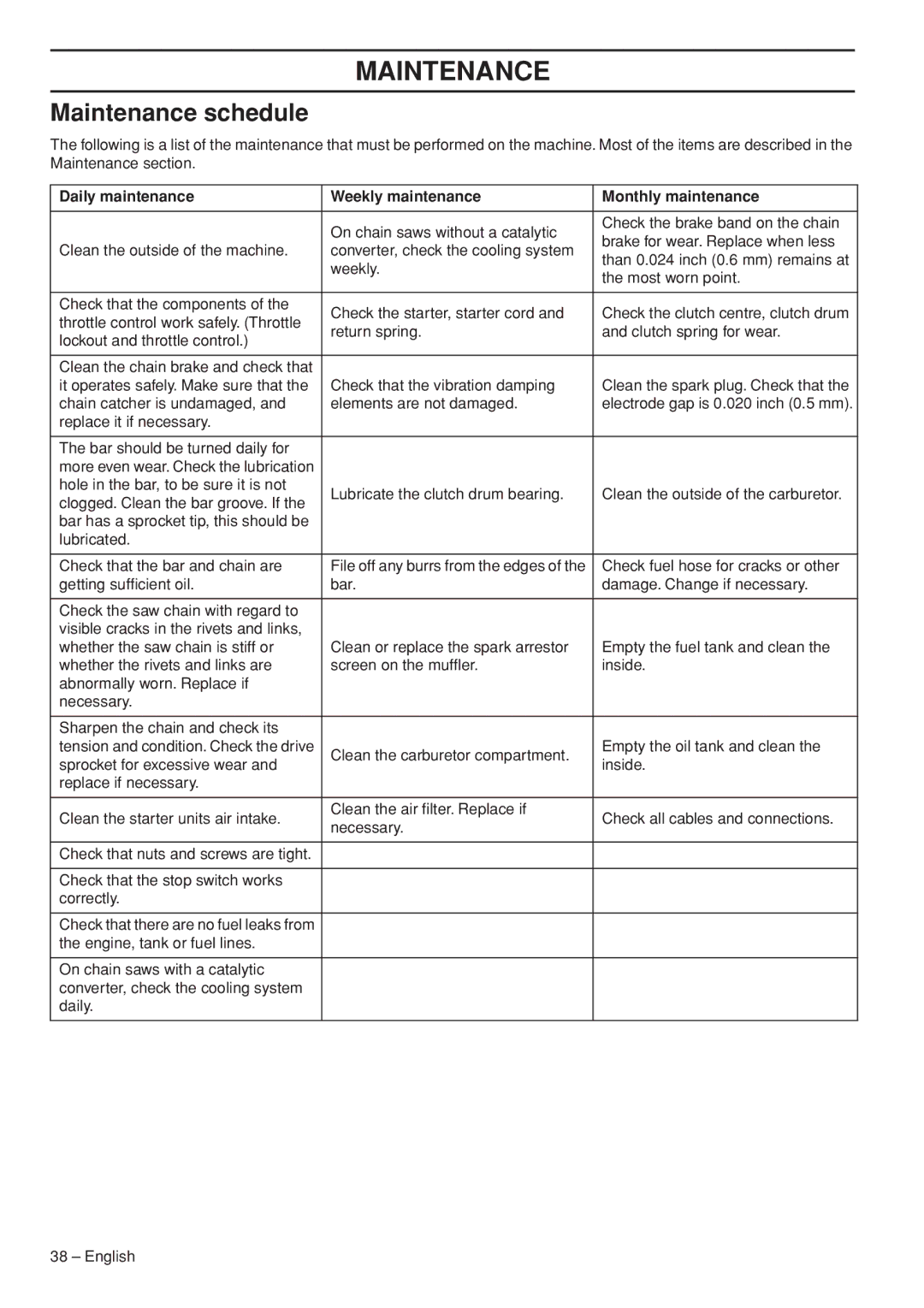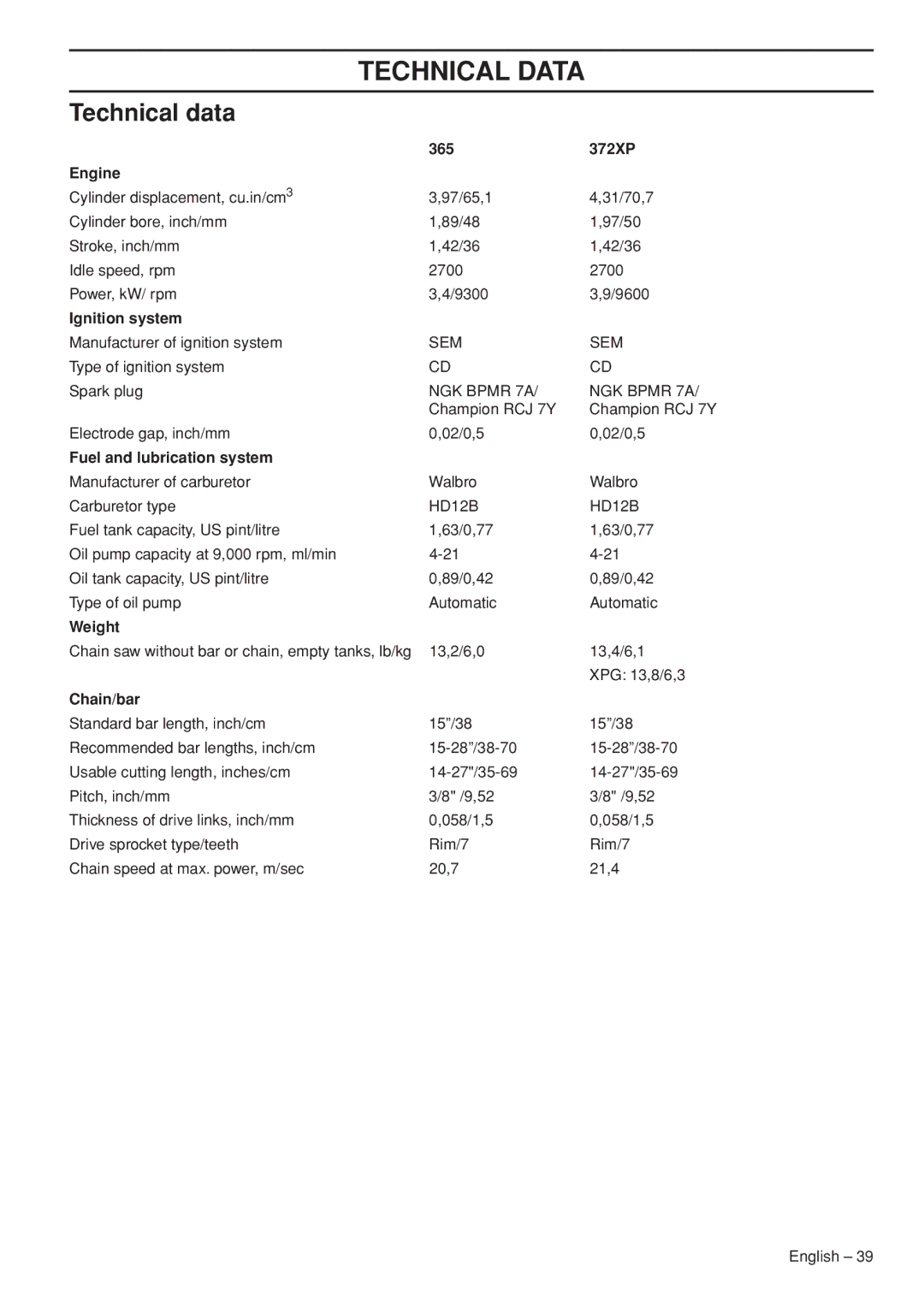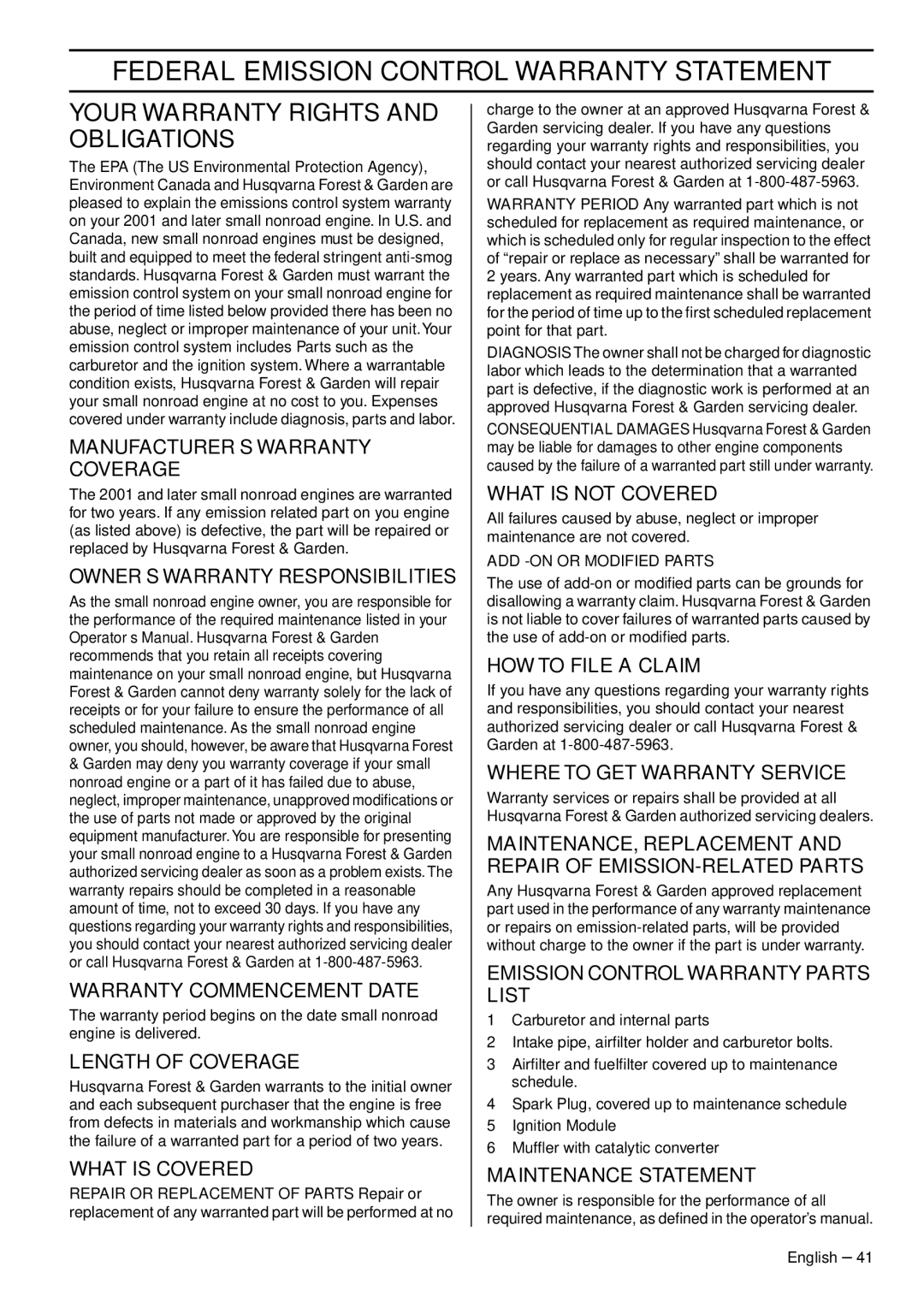
FUEL HANDLING
Fueling
WARNING! Taking the following
!precautions, will lessen the risk of fire:
Do not smoke and do not place any hot objects in the vicinity of fuel.
Always stop the engine and let it cool for a few minutes before refuelling.
When refuelling, open the fuel cap slowly so that any excess pressure is released gently.
Tighten the fuel cap carefully after refuelling.
Always move the machine away from the refuelling area before starting.
Clean the area around the fuel cap. Clean the fuel and chain oil tanks regularly. The fuel filter must be replaced at least once a year. Contamination in the tanks causes malfunction. Make sure the fuel is well mixed by shaking the container before refuelling.The capacities of the chain oil tank and fuel tank are carefully matched. You should therefore always fill the chain oil tank and fuel tank at the same time.
WARNING! Fuel and fuel vapor are highly
! flammable. Take care when handling fuel and chain oil. Be aware of the risks of fire, explosion and those associated with inhalation.
Fuel safety
•Never refuel the machine while the engine is running.
•Make sure there is plenty of ventilation when refuelling or mixing fuel (gasoline and
•Move the machine at least 10 ft (3 m) from the refuelling point before starting it.
•Never start the machine:
1If you have spilled fuel or chain oil on the machine. Wipe off the spillage and allow remaining fuel to evaporate.
2If you have spilled fuel on yourself or your clothes, change your clothes. Wash any part of your body that has come in contact with fuel. Use soap and water.
3If the machine is leaking fuel. Check regularly for leaks from the fuel cap and fuel lines.
WARNING! Never use a machine with
! visible damage to the spark plug guard and ignition cable. A risk of sparking arises, which can cause a fire.
Transport and storage
•Always store the chain saw and fuel so that there is no risk of leakages or fumes coming into contact with sparks or naked flames from electrical equipment, electric motors, relays/switches, boilers and the like.
•Always store fuel in an approved container designed for that purpose.
•For longer periods of storage or for transport of the chain saw, the fuel and chain oil tanks should be emptied. Ask where you can dispose of waste fuel and chain oil at your local gas station.
•The bar guard must always be fitted to the cutting attachment when the machine is being transported or in storage, in order to prevent accident contact with the sharp chain. Even a
Long-term storage
Empty the fuel/oil tanks in a well ventilated area. Store the fuel in approved cans in a safe place. Fit the bar guard. Clean the machine. See instructions under the heading Maintenance schedule.
Ensure the machine is cleaned and that a complete service is carried out before
18 – English


